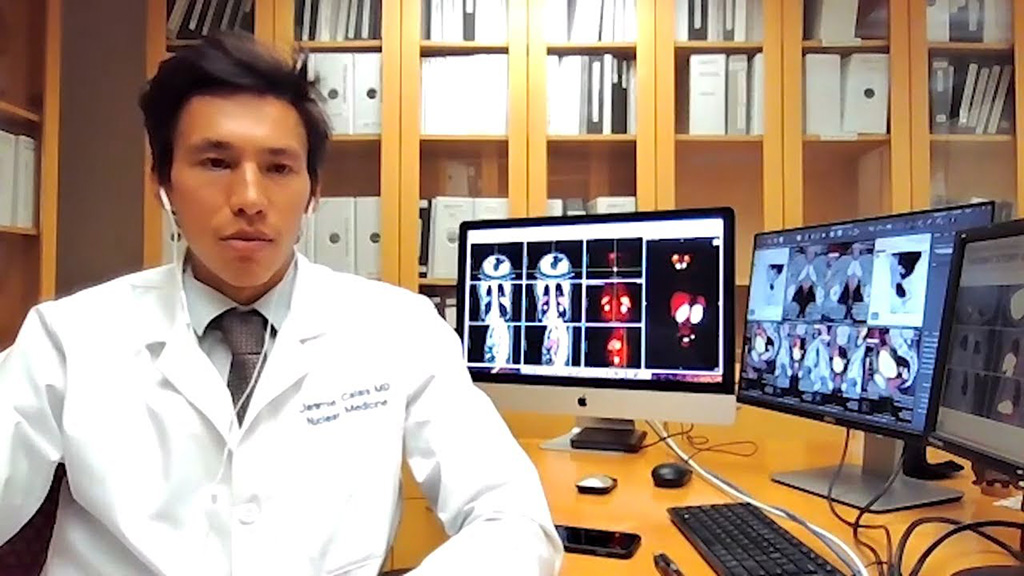Targeted PET Imaging Locates Prostate Cancer and Metastases
By MedImaging International staff writers
Posted on 28 Sep 2021
A new positron emission tomography (PET) method can detect prostate-specific membrane antigen (PSMA) radioactive tracers throughout the body, claims a new study.Posted on 28 Sep 2021
Developed by researchers at the University of California, San Francisco (UCSF; USA), Aalborg University Hospital (Denmark), the University of California, Los Angeles (UCLA; USA), and other institutions, 68Ga-PSMA-11 is a PSMA imaging tracer for the detection of prostate cancer (PC) nodal metastases. To examine its diagnostic efficacy (as compared with histopathology), they enrolled 764 patients with intermediate- to high-risk PC, 277 of which subsequently underwent radical prostatectomy treatment.

Image: Dr. Jeremie Calais at the 68Ga-PSMA-11 PSMA PET workstation (Photo courtesy of UCLA)
The results revealed that 68Ga-PSMA-11 PET scans were positive in 14% of pelvic nodal cases, one percent of extrapelvic nodal cases, and 3% of patients with bone metastatic disease. Sensitivity for detection of pelvic lymph node metastasis was 40%, indicating that in the remaining 60% of patients, the lesions were too small to be detected (micrometastasis); specificity, however, was 95%, much better than current existing methods. The study was published on September 16, 2021, in JAMA Oncology.
“When a patient is diagnosed with prostate cancer that has some pathologic features on the biopsy that indicate some risk of metastasis in the lymph node or the bones, the physician need to know if the cancer has spread out of the prostate or not,” said senior author Jeremie Calais, MD, of the UCLA department of molecular and medical pharmacology. “PSMA PET/CT is a whole- whole-body imaging modality that can perform a one-time whole body staging with high accuracy for locating and detecting if any metastasis has spread out from the prostate.”
PET is a nuclear medicine imaging technique that produces a three dimensional (3D) image of functional processes in the body. The system detects pairs of gamma rays emitted indirectly by a positron-emitting radionuclide tracer. Tracer concentrations within the body are then constructed in 3D by computer analysis. In modern PET-CT scanners, 3D imaging is often accomplished with the aid of a CT X-ray scan performed on the patient during the same session, in the same machine.
Related Links:
University of California, San Francisco
Aalborg University Hospital
University of California, Los Angeles




 Guided Devices.jpg)









